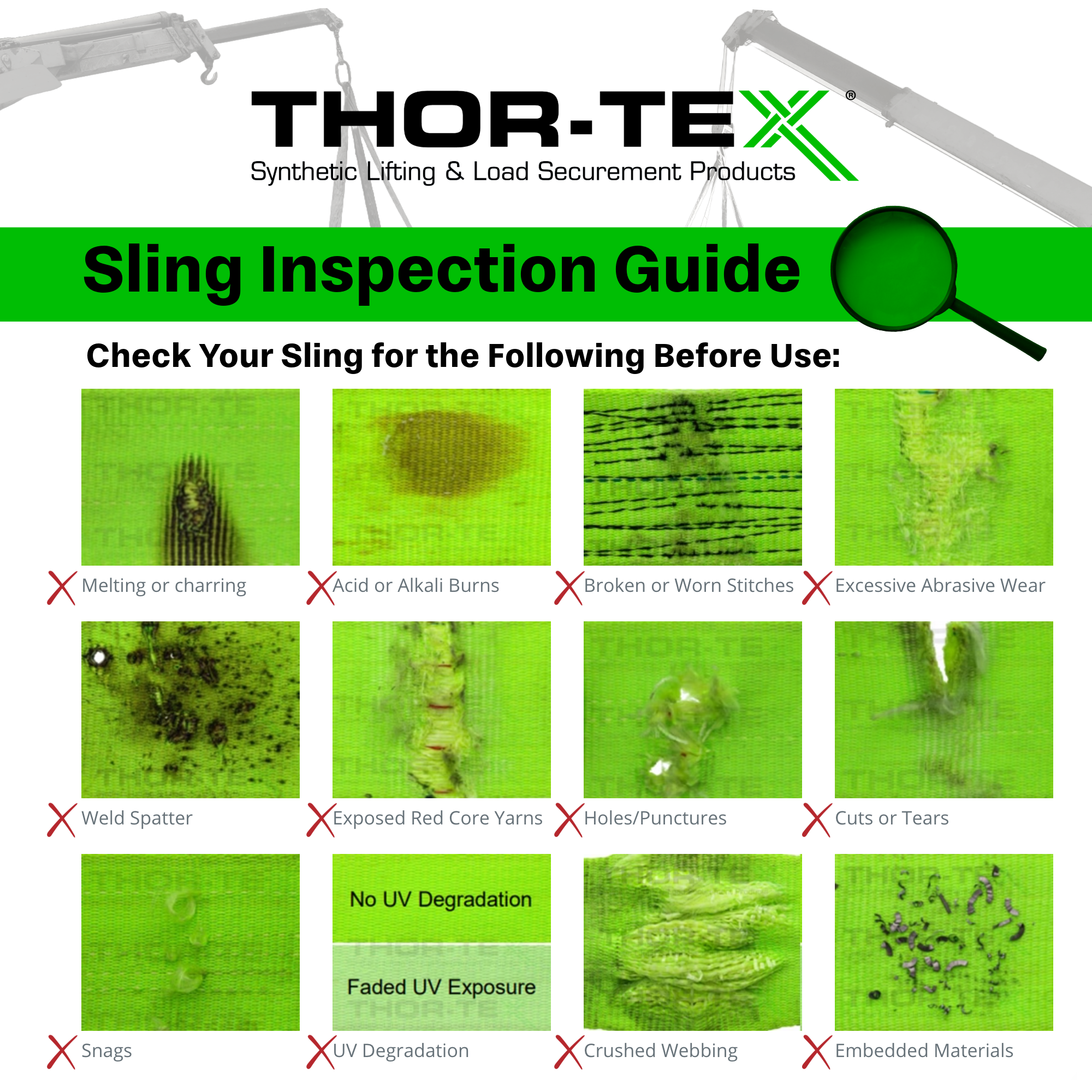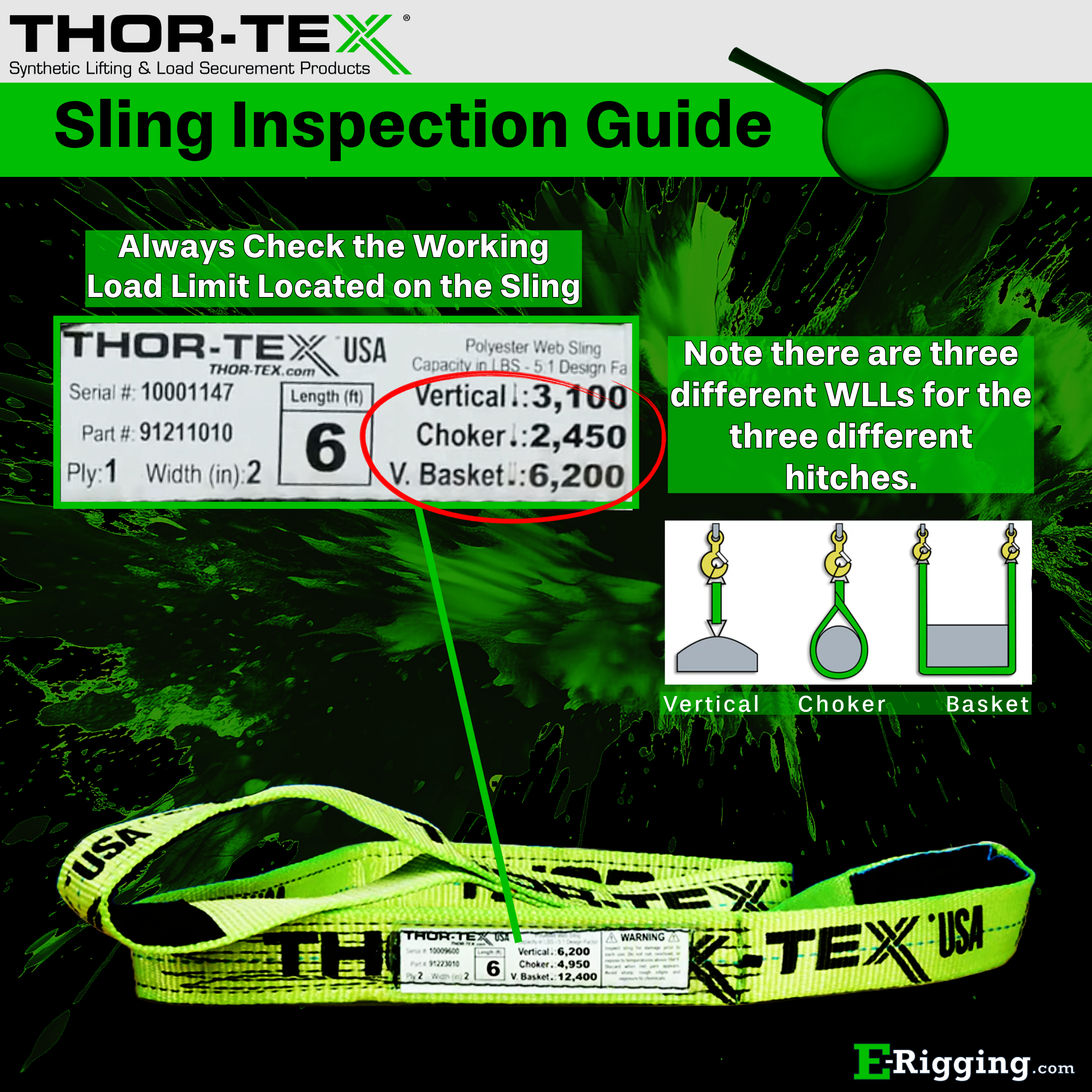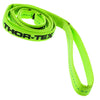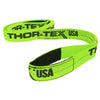Please Note: Lifting & lifting systems require the use of several tools, variables & devices, and polyester web sling(s) are only one part of that system. It is critical that you read and understand this bulletin prior to using polyester web slings and the failure to do so may result in severe INJURY or DEATH due to sling failure and/or loss of the load.
Properly inspecting and maintaining your synthetic lifting slings is crucial to ensure safety and extend their lifespan. Here’s a comprehensive guide to help you keep your slings in top condition.
Inspection Guidelines
1. Visual Inspection:
Before each use, visually inspect the sling for any signs of damage. Look for cuts, tears, or abrasions on the webbing. Check for broken stitching or signs of chemical damage, such as discoloration.
2. Feel for Damage:
Run your hands along the sling to detect any hidden damage. Look for stiffness, which could indicate chemical exposure or heat damage. Ensure there are no hard spots or thinning areas.
3. Hardware Check:
Inspect all hardware, including hooks and shackles, for any signs of wear, corrosion, or damage. Make sure that all attachments are secure and functioning correctly.
4. Load Capacity:
Ensure the sling is still within its rated load capacity. If the tag showing the Working Load Limit (WLL) is missing or illegible, remove the sling from service.
Maintenance Tips
1. Clean Regularly:
Keep your slings clean by removing dirt, grease, and other contaminants. Use mild soap and water, and avoid harsh chemicals that can weaken the fibers. Rinse thoroughly and allow the sling to dry completely before storing.
2. Store Properly:
Store slings in a cool, dry place away from direct sunlight and chemicals. Hanging slings or placing them on a rack helps prevent tangling and damage.
3. Avoid Sharp Edges:
When using synthetic slings, avoid dragging them over sharp edges. Use wear pads or edge protectors to reduce the risk of cuts and abrasions.
Protection from Sharp Edges: OSHA 1910.184(c)(7) specifies that slings must be padded or protected from sharp edges. This means that when using lifting slings with forklifts, there should be padding or protective measures between the forklift forks and the sling to prevent abrasion and tears.
4. Regular Professional Inspections:
Schedule regular inspections by a qualified professional. This should be done at least annually or more frequently if the slings are used in harsh conditions or for critical lifts.
When to Discard a Sling
Discard your sling if it shows any of the following signs:
- Cuts, tears, or burns in the webbing
- Broken wires or excessive wear in wire rope slings
- Bent, cracked, or damaged chain links
- Melting or weakening of synthetic fibers due to heat exposure
Proper inspection and maintenance of your synthetic lifting slings are essential to ensure safety and efficiency in your lifting operations. By following these guidelines, you can extend the lifespan of your slings and prevent accidents.
For more detailed information on sling safety and best practices, visit our Web Sling Bulletin.





